Two Remarkable Ladies
Mary MacKillop, St Mary of the Cross and Suzanne Aubert, Mother Mary Joseph
Part II
Suzanne Aubert from a middle class family, living in the vibrant Catholic city of Lyon,with opportunities to increase her knowledge and experiences. Seeking a way to achieve her goal as a religious.
Mary MacKillop from a family who struggled to make ends meet. Mary having to work to support the family and with few opportunities for education. Living in a country where the church was in its infancy. Determined to become a religious.
On the path to holiness
Australia and New Zealand in the 1860’s were primitive countries especially away from the main cities. Other than the indigenous people, the residents were migrants mainly from Britain, Ireland and Europe, come to make a better life often with little idea of the tribulations ahead.
Suzanne - Without her parents knowledge Suzanne travelled to Le Havre where she set sail for New Zealand on 4 September 1860 (25 years old) as one of Bishop Pompallier’s group. Her parents thought she had gone to Ars for the anniversary of the death of Jean Vianney!!! Accompanying her on the voyage were Lucie Pompallier (a niece of the Bishop), Peroline Droguet and Antoinette Deloncle. They arrived in Auckland on 30 December 1860 where Suzanne remained until 1871. The journey put Suzanne off sailing as the conditions were primitive, the seas unkind and the ship did not touch land until it reached Auckland. Yet she was to travel again to Rome to further the cause of her Congregation.
In Auckland the four women were made postulants of the Sisters of Mercy, but there were difficulties one of which was language, French versus English. Later Suzanne, Lucie, Peroline and two Maori women, Peata and Ateraita were professed by Bishop Pompallier as Sisters of the Holy Family. Antoinette had gone to Wellington. Suzanne became Sister Mary Joseph, Meri Hohepa. The Sisters were given responsibility for the education of Maori girls in Auckland. Pompallier set them up in the Nazareth Institute in Ponsonby, a new convent with facilities for boarding and education. Clearly Pompallier had a soft spot for the French sisters. For Suzanne it must have seemed like a dream come true, to be able to focus on the education of the Maori girls. Peata, a devout Catholic, although in failing health, was an immense help to Suzanne in learning the Maori language and customs. Suzanne recounts that the girls taught her a few things too including ‘naughty’ words.
The Institute proceeded smoothly for a few years but then with the New Zealand wars fewer students came. As well the finances of the Auckland diocese were close to insolvency. Pompallier returned permanently to France. Suzanne thought that the Institute had been gifted to them; they had raised money to help pay the bills, all to no avail as in October 1869 the property was sold. Her three companions from France had gone their separate ways - Lucie back to France with the Bishop, Peroline to the Sisters of Mercy, Antoinette sadly to a most unhappy life in Sydney.
Suzanne struggled on with the remaining girls but it got too much. However the two years from 1869 until Suzanne left for Napier in 1871 could have been a blessing. Several factors including a reluctance of the Auckland hierarchy to assist her cause to work with the Maoris became important in that Suzanne had to stand on her own two feet. She realised that some clergy were not always to be trusted, indeed could be antagonistic. The new bishop, Thomas Croke, who was pro-Irish, must have found the spirited little French Sister daunting as he ordered her to cease her activities and return to France. He did not offer her the fare though!!! She learnt the skill of cultivating persons who were sympathetic to her cause, including prominent non-Catholics; a talent that was evidenced later when governor generals and prime ministers helped out with working bees to erect the reservoir at Island Bay. She even learnt the ‘art’ of begging for essentials. Later her Sisters were a common sight on the streets of Wellington with their baskets collecting provisions donated by persons of all persuasions.
Suzanne, now 36, was suffering from ill health to the extent that she was able to eat little (a result of a previous accident), her eyesight was deteriorating and she would have been worried. Her faith in God was being sorely tested. About this time her parents became aware of her problems; they wanted her to return to France but she was determined to persevere.
Mary – Probably the turning point in Mary’s life was in 1860, aged 18, when she went to Penola in South Australia as governess to the children of her wealthy aunt Margaret and uncle Alexander Cameron. Here she met Fr Julian Tenison Woods who was to have a strong influence as her spiritual advisor. At that time there were few opportunities for children in the outback, even in the cities, to be educated in a Catholic environment, especially those from poor families.Tenison Woods recognized a crucial need to set up schools and identified in Mary a suitable person to be involved. Mary had indicated that she wished to become a nun.Tenison Woods’ idea was that it might be best for Mary to start a new Congregation. Later the relationship with Fr Tenison Woods deteriorated to the effect that he rarely spoke of her but Mary always gave him credit for his encouragement to create the Congregation.
In 1862 Mary returned to Victoria where the family moved to Portland on the south west coast, into a large house with the view to use it as a family home plus a boarding and day school for girls. Flora was pleased that the family were together but worried about finances. How were they going to pay for it? To earn money Mary took a teaching job at the Catholic Denominational School where she was required to train as a teacher. Flora was to look after the running of the house with Mary to assist. Annie joined the teaching staff later. All went smoothly until a bitter dispute occurred between Mary and the head teacher which led to Alexander forbidding Annie to continue teaching. Alexander stood up for Mary who continued under difficult circumstances, possibly the family needed her salary.
Time for a new direction
Suzanne - This was to come through the Marist Fathers who had always been supportive. What a blessing the contacts were to be. With their encouragement, especially from Fr. Reignier, in February 1871 she set off on her own to the Marist (Maori) mission at Meanee in Napier where the facilities were possibly similar to those Mary met in Penola, primitive, certainly far removed from those of Lyon, even from those in Auckland. Her devoted companion, Peata, now blind, remained with the Sisters of Mercy.
One could say that this was to be the main start of her mission in New Zealand apart from her work with the Maori girls in Auckland. Certainly it was a stepping stone in the great work she achieved from then on until her death in 1926, aged 91, when she was accorded the equivalent of a state funeral.
Mary - In 1865 Annie, aged 17, went to Penola approximately 400km from Adelaide, to help Fr Tenison Woods with education of the children. How could one so young achieve much? Then in 1866 Mary (24) was requested to join Annie which she did accompanied by Lexie. The first school was a stable which Mary’s brother, John, was able to make more habitable. Had Mary started on her dream, to educate the children and assist the needy?
Being a nun was foremost in Mary’s mind. In Penola, on the feast of St Joseph, 19 March, Mary, Lexie and Blanche Amsinck adopted a black dress identifying them as postulants. A few others joined them and another school was opened at Mt Gambier a short distance away. Then Fr Tenison Woods went to Adelaide where he took on the responsibility for Catholic education. Shortly after he requested Mary to go there. So begins Mary’s mission that lead to great achievements and saintliness.
A momentous occasion - In 1867 in Adelaide, at the age of 25, on 15 August, the feast of the Assumption, Mary became the first Sister of the Congregation of the Sisters of St Joseph. What a talented and saintly person she must have been to become the founder of a congregation at such a young age. Suzanne, no less talented, was nearly 60 when her Sisters, initially established under the Third Order of the Society of Mary, became the Daughters of Our Lady of Compassion.
Mary had experienced difficulties, largely family related, but these were miniscule compared with the trials to follow often through deviousness, prejudice and arrogance of some who should have known better. Like Suzanne she would quickly recognise those whom she could trust for support. Her choice of title, Sister Mary of the Cross, was most appropriate when one reads of the incredible difficulties that later she was to meet but her faith in God never wavered. Health problems were another cross. In 1902 with Annie she to went Rotorua for recuperation where she had a stroke that immobilized her. She carried on with great fortitude until she died in Sydney in 1909, aged 67.
Two remarkable ladies
Both with significant health problems. Both in countries where the church was in its infancy. Both determined to be nuns. Both determined to educate and to serve the disadvantaged. Both able to express their views strongly and rationally. Both recognising the difference between supporters and others. Both determined to overcome obstacles. Both with indomitable spirits, carrying their burdens with equanimity, trusting in God.
Their main missions have commenced - Mary in Adelaide - Suzanne in Napier.
Two remarkable ladies who founded the only home-grown Congregations in Australasia. Both Congregations became well known throughout Australasia and the Pacific Islands.
Thank God for their lives.
When Suzanne first went to Jerusalem (Hiruharama) in 1883, initially she was assisted by three Sisters of St Joseph who were based in Wanganui. These sisters had been part of Mary’s Congregation but under the influence of Bishop Quinn in Bathhurst had become a Diocesan Congregation under the guidance of Fr Woods.
References
The Story of Suzanne Aubert, Jessie Munro, Auckland University Press, 1998
An Extraordinary Australian Mary MacKillop, Paul Gardiner SJ, E.J.Dwyer (Australia) Pty Ltd, 1994
Acknowledgements
Sr Josephine Gorman, Archivist, DOLC, Island Bay, Wellington
Jessie Munro
The Congregation of St Joseph, North Sydney, requested the following -
Reasonable efforts have been made by the Sisters of St Joseph to verify the contents for accuracy and completeness. Please note that a review of content is not an endorsment by the Sisters of St Joseph.
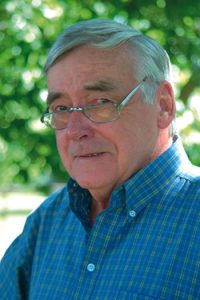
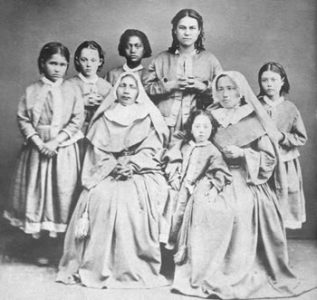
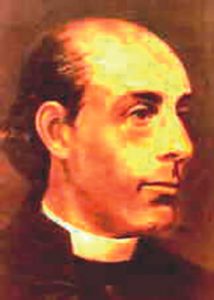
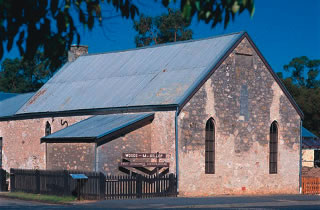
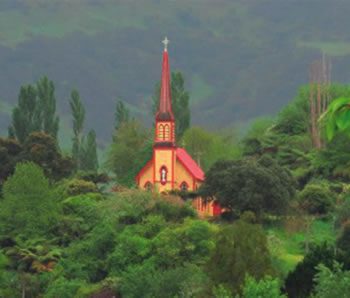
 Entries(RSS)
Entries(RSS)